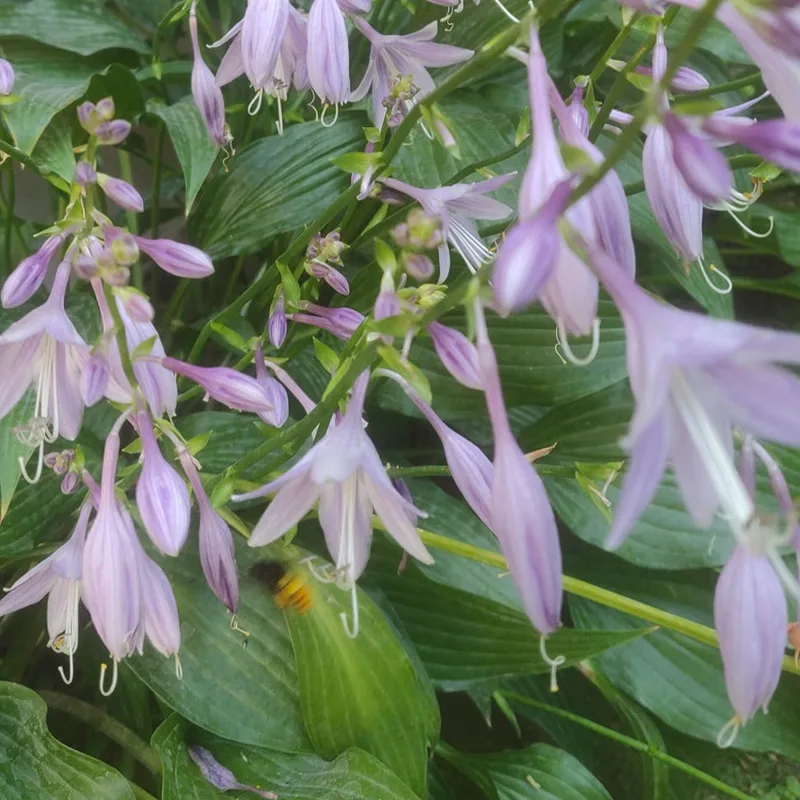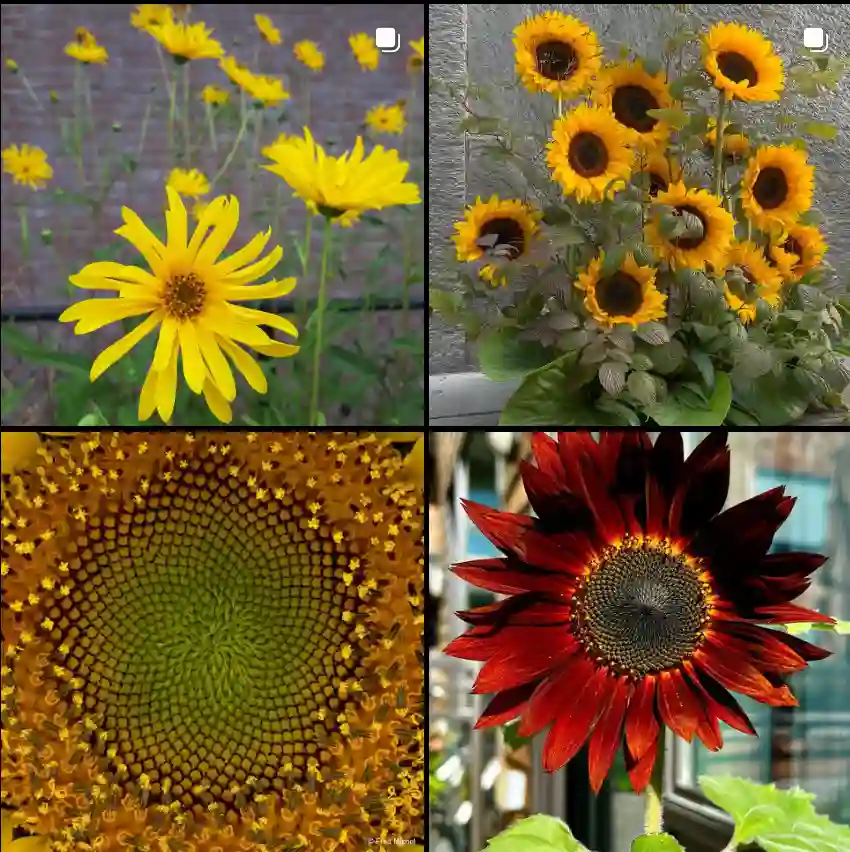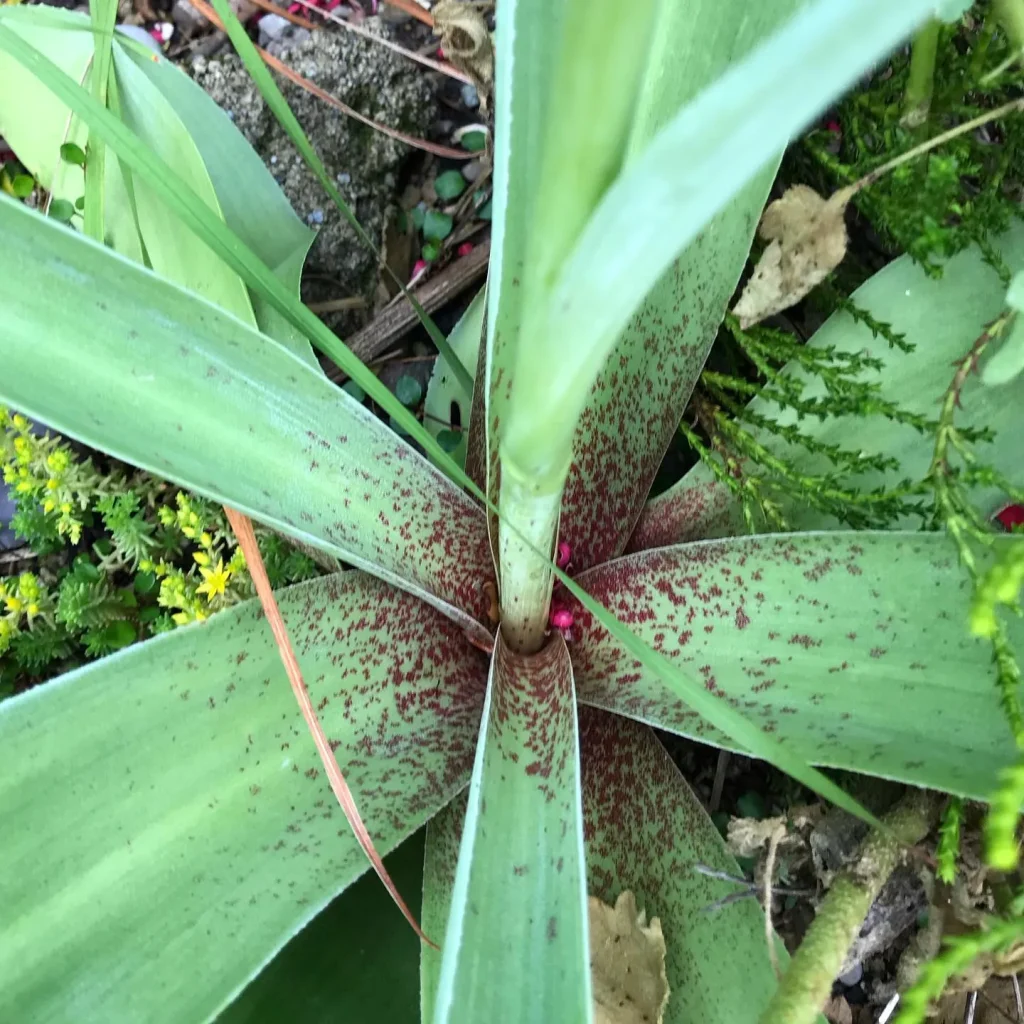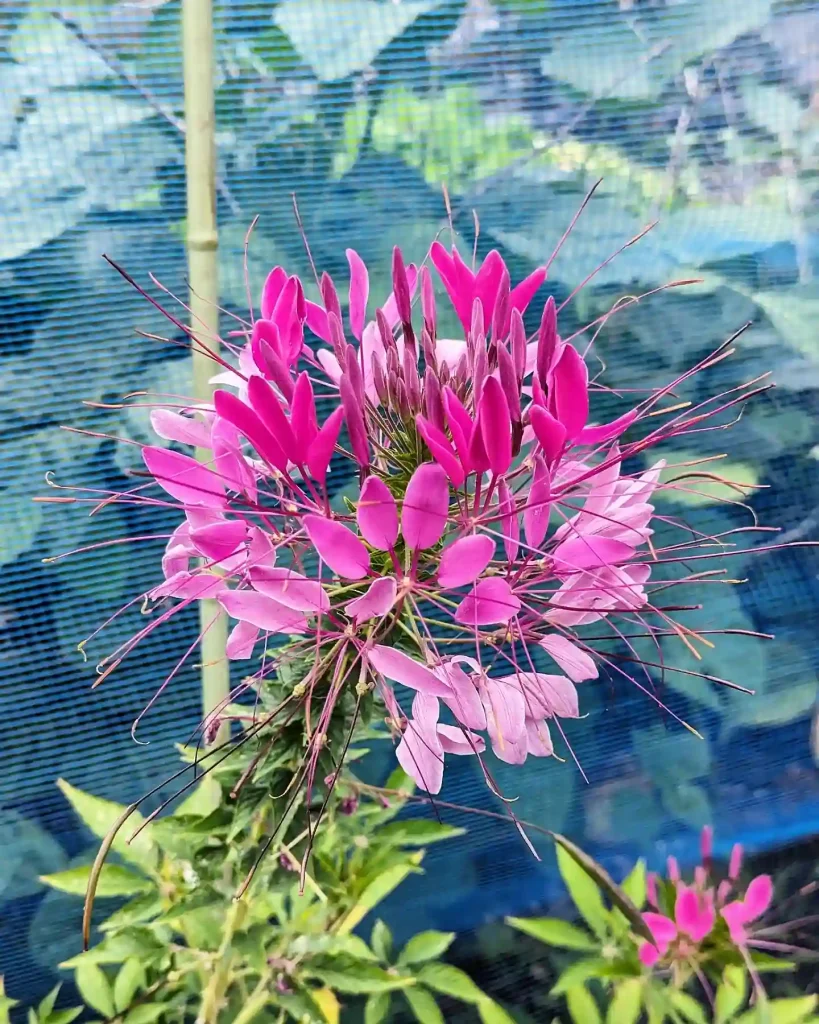Exploring the Fascinating Nepenthaceae Family: A Deep Dive into Nepenthes
As a plant enthusiast, I find myself drawn to unique and captivating plant families. One of the most intriguing is the Nepenthaceae family, particularly the Nepenthes genus. These remarkable plants, commonly known as pitcher plants, have always fascinated me with their extraordinary adaptations and diverse species. In this article, I will share my journey of exploring Nepenthes, their characteristics, habitats, and care requirements.
What Are Nepenthes?
Nepenthes are a genus of carnivorous plants native to tropical regions of the world. They are often recognized by their distinct pitcher-shaped leaves that trap and digest insects. This adaptation allows them to thrive in nutrient-poor soils, where traditional plant nutrition methods may fall short. With over 100 species documented, each Nepenthes plant exhibits unique features, colors, and growth habits.
During my exploration of Nepenthes, I’ve learned that these plants are not just beautiful; they have fascinating biological mechanisms. The pitcher-shaped leaves serve as a trap, luring insects with nectar. Once inside, the insects find it challenging to escape due to the slippery walls and digestive enzymes that break them down. This unique adaptation is a brilliant example of evolution in action.
Diversity in Nepenthes Species
- Nepenthes abalata Jebb & Cheek
- Nepenthes abgracilis Jebb & Cheek
- Nepenthes adnata Tamin & M.Hotta ex Schlauer
- Nepenthes adrianii Bartoro & Wartono
- Nepenthes aenigma H.Nuytemans, W.Suarez & Calaramo
- Nepenthes alata Blanco Plant FAQs: Nepenthes Alata
- Nepenthes alba Ridl.
- Nepenthes albomarginata W.Lobb ex Lindl. Plant FAQs: Nepenthes Albomarginata
- Nepenthes alfredoi Amoroso & Lagunday
- Nepenthes × alisaputrana J.H.Adam & Wilcock
- Nepenthes alzapan Jebb & Cheek
- Nepenthes ampullaria Jack Plant FAQs: Nepenthes Ampullaria
- Nepenthes andamana M.Catal.
- Nepenthes angasanensis Maulder, D.Schub., B.R.Salmon & B.Quinn
- Nepenthes appendiculata Chi.C.Lee, Bourke, Rembold, W.Taylor & S.T.Yeo
- Nepenthes argentii Jebb & Cheek
- Nepenthes aristolochioides Jebb & Cheek Plant FAQs: Nepenthes Aristolochioides
- Nepenthes armin Jebb & Cheek
- Nepenthes attenboroughii A.S.Rob., S.McPherson & V.B.Heinrich
- Nepenthes barcelonae Tandang & Cheek
- Nepenthes beccariana Macfarl.
- Nepenthes bellii K.Kondo
- Nepenthes benstonei C.Clarke
- Nepenthes berbulu H.L.Tan, G.Lim, Mey, Golos, Wistuba, S.McPherson & A.S.Rob.
- Nepenthes biak Jebb & Cheek
- Nepenthes bicalcarata Hook.f. Plant FAQs: Nepenthes Bicalcarata
- Nepenthes bokorensis Mey Plant FAQs: Nepenthes Bokorensis
- Nepenthes bongso Korth.
- Nepenthes boschiana Korth.
- Nepenthes bracteosa Suran. & Nuanlaong
- Nepenthes burbidgei Hook.f. ex Burb.
- Nepenthes burkei H.J.Veitch ex Mast. Plant FAQs: Nepenthes Burkei
- Nepenthes cabanae Lagunday & Amoroso
- Nepenthes calcicola Gary W.Wilson, S.Venter & Damas
- Nepenthes campanulata Sh.Kurata Plant FAQs: Nepenthes Campanulata
- Nepenthes candalaga Lagunday & Amoroso
- Nepenthes ceciliae Gronem., Coritico, Micheler, Marwinski, Acil & Amoroso
- Nepenthes chang M.Catal.
- Nepenthes chaniana C.Clarke, Chi C.Lee & S.McPherson
- Nepenthes cid Jebb & Cheek
- Nepenthes × cincta Mast.
- Nepenthes clipeata Danser Plant FAQs: Nepenthes Clipeata
- Nepenthes copelandii Merr. ex Macfarl.
- Nepenthes cornuta Marwinski, Coritico, Wistuba, Micheler, Gronem., Gieray & Amoroso
- Nepenthes dactylifera A.S.Rob., Golos, S.McPherson & Barer
- Nepenthes danseri Jebb & Cheek
- Nepenthes deaniana Macfarl.
- Nepenthes densiflora Danser
- Nepenthes diabolica A.Bianchi, Chi.C.Lee, Golos, Mey, M.Mansur & A.S.Rob. Plant FAQs: Nepenthes Diabolica
- Nepenthes diatas Jebb & Cheek
- Nepenthes distillatoria L.
- Nepenthes domei M.N.Faizal, A.Amin & Latiff
- Nepenthes dubia Danser Plant FAQs: Nepenthes Dubia
- Nepenthes edwardsiana H.Low ex Hook.f. Plant FAQs: Nepenthes Edwardsiana
- Nepenthes ephippiata Danser
- Nepenthes epiphytica A.S.Rob., Nerz & Wistuba Plant FAQs: Nepenthes Epiphytica
- Nepenthes erucoides A.S.Rob. & S.G.Zamudio
- Nepenthes eustachya Miq.
- Nepenthes extincta Jebb & Cheek
- Nepenthes eymae Sh.Kurata Plant FAQs: Nepenthes Eymae
- Nepenthes faizaliana J.H.Adam & Wilcock
- Nepenthes flava Wistuba, Nerz & A.Fleischm.
- Nepenthes fractiflexa Golos, A.S.Rob. & Barer
- Nepenthes fusca Danser
- Nepenthes gantungensis S.McPherson, Cervancia, Chi C.Lee, Jaunzems, Mey & A.S.Rob.
- Nepenthes glabrata J.R.Turnbull & A.T.Middleton Plant FAQs: Nepenthes Glabrata
- Nepenthes glandulifera Chi C.Lee
- Nepenthes graciliflora Elmer
- Nepenthes gracilis Korth. Plant FAQs: Nepenthes Gracilis
- Nepenthes gracillima Ridl.
- Nepenthes gymnamphora Reinw. ex Nees
- Nepenthes halmahera Cheek
- Nepenthes hamata J.R.Turnbull & A.T.Middleton Plant FAQs: Nepenthes Hamata
- Nepenthes hamiguitanensis Gronem., Wistuba, V.B.Heinrich, S.McPherson, Mey & Amoroso
- Nepenthes harauensis Hernawati, Satria & Chi.C.Lee
- Nepenthes × harryana Burb.
- Nepenthes hemsleyana Macfarl.
- Nepenthes hirsuta Hook.f.
- Nepenthes hirtella Suran. & Nuanlaong
- Nepenthes hispida Beck
- Nepenthes holdenii Mey
- Nepenthes × hookeriana H.Low
- Nepenthes hurrelliana Cheek & A.Lamb
- Nepenthes inermis Danser Plant FAQs: Nepenthes Inermis
- Nepenthes insignis Danser
- Nepenthes izumiae Troy Davis, C.Clarke & Tamin
- Nepenthes jacquelineae C.Clarke, Troy Davis & Tamin Plant FAQs: Nepenthes Jacquelineae
- Nepenthes jamban Chi C.Lee, Hernawati & Akhriadi Plant FAQs: Nepenthes Jamban
- Nepenthes justinae Gronem., Wistuba, Mey & Amoroso
- Nepenthes kampotiana Lecomte
- Nepenthes kerrii Catal. & Kruetr.
- Nepenthes khasiana Hook.f. Plant FAQs: Nepenthes Khasiana
- Nepenthes × kinabaluensis Sh.Kurata
- Nepenthes kitanglad Jebb & Cheek
- Nepenthes klossii Ridl. Plant FAQs: Nepenthes Klossii
- Nepenthes kongkandana M.Catal. & Kruetr.
- Nepenthes krabiensis Nuanlaong, Onsanit, Chusangr. & Suran.
- Nepenthes lamii Jebb & Cheek
- Nepenthes latiffiana M.N.Faizal, A.Amin & Dome
- Nepenthes lavicola Wistuba & Rischer
- Nepenthes leonardoi S.McPherson, Bourke, Cervancia, Jaunzems & A.S.Rob.
- Nepenthes leyte Jebb & Cheek
- Nepenthes limiana Wistuba, Mey, Golos, S.McPherson & A.S.Rob.
- Nepenthes lingulata Chi C.Lee, Hernawati & Akhriadi
- Nepenthes longifolia Nerz & Wistuba
- Nepenthes longiptera Victoriano
- Nepenthes lowii Hook.f. Plant FAQs: Nepenthes Lowii
- Nepenthes macfarlanei Hemsl.
- Nepenthes macrophylla (Marabini) Jebb & Cheek Plant FAQs: Nepenthes Macrophylla
- Nepenthes macrovulgaris J.R.Turnbull & A.T.Middleton
- Nepenthes madagascariensis Poir.
- Nepenthes malayensis A.Amin, M.N.Faizal & Dome
- Nepenthes malimumuensis Lagunday, Acma, Cabana, N.Sabas & Amoroso
- Nepenthes manobo Lagunday, Acma, Cabana, N.Sabas & Amoroso
- Nepenthes mantalingajanensis Nerz & Wistuba
- Nepenthes mapuluensis J.H.Adam & Wilcock
- Nepenthes maryae Cheek & Jebb
- Nepenthes masoalensis R.Schmid
- Nepenthes maxima Reinw. Plant FAQs: Nepenthes Maxima
- Nepenthes maximoides Cheek
- Nepenthes merrilliana Macfarl.
- Nepenthes micramphora V.B.Heinrich, S.McPherson, Gronem. & Amoroso
- Nepenthes mikei B.R.Salmon & Maulder
- Nepenthes mindanaoensis Sh.Kurata
- Nepenthes mira Jebb & Cheek
- Nepenthes mirabilis (Lour.) Druce Plant FAQs: Nepenthes Mirabilis
- Nepenthes misoolensis Golos, S.McPherson, Primaldhi, Suska & Tjiasm.
- Nepenthes mollis Danser
- Nepenthes monticola A.S.Rob., Wistuba, Nerz, M.Mansur & S.McPherson
- Nepenthes muluensis M.Hotta
- Nepenthes murudensis Culham ex Jebb & Cheek
- Nepenthes naga Akhriadi, Hernawati, Primaldhi & M.Hambali Plant FAQs: Nepenthes Naga
- Nepenthes nebularum G.Mansell & W.Suarez
- Nepenthes × neglecta Macfarl.
- Nepenthes negros Jebb & Cheek
- Nepenthes neoguineensis Macfarl.
- Nepenthes nigra Nerz, Wistuba, Chi.C.Lee, Bourke, U.Zimm. & S.McPherson
- Nepenthes northiana Hook.f.
- Nepenthes orbiculata M.Catal. & Kruetr.
- Nepenthes ovata Nerz & Wistuba
- Nepenthes palawanensis S.McPherson, Cervancia, Chi C.Lee, Jaunzems, Mey & A.S.Rob. Plant FAQs: Nepenthes Palawanensis
- Nepenthes paniculata Danser
- Nepenthes pantaronensis Gieray, Gronem., Wistuba, Marwinski, Micheler, Coritico & Amoroso
- Nepenthes papuana Danser
- Nepenthes parvula Gary W.Wilson & S.Venter
- Nepenthes pectinata Danser
- Nepenthes peltata Sh.Kurata Plant FAQs: Nepenthes Peltata
- Nepenthes pervillei Blume
- Nepenthes petiolata Danser
- Nepenthes philippinensis Macfarl.
- Nepenthes pilosa Danser
- Nepenthes pitopangii Chi C.Lee, S.McPherson, Bourke & M.Mansur
- Nepenthes platychila Chi C.Lee Plant FAQs: Nepenthes Platychila
- Nepenthes pudica Dančák & Majeský
- Nepenthes pulchra Gronem., S.McPherson, Coritico, Micheler, Marwinski & Amoroso
- Nepenthes putaiguneung Al-Farishy, Metusala & Jebb
- Nepenthes × pyriformis Sh.Kurata
- Nepenthes rafflesiana Jack Plant FAQs: Nepenthes Rafflesiana
- Nepenthes rajah Hook.f. Plant FAQs: Nepenthes Rajah
- Nepenthes ramispina Ridl. Plant FAQs: Nepenthes Ramispina
- Nepenthes ramos Jebb & Cheek
- Nepenthes reinwardtiana Miq.
- Nepenthes rhombicaulis Sh.Kurata
- Nepenthes rigidifolia Akhriadi, Hernawati & Tamin
- Nepenthes robcantleyi Cheek Plant FAQs: Nepenthes Robcantleyi
- Nepenthes rosea M.Catal. & Kruetr.
- Nepenthes rowaniae F.M.Bailey
- Nepenthes samar Jebb & Cheek
- Nepenthes sanguinea Lindl. Plant FAQs: Nepenthes Sanguinea
- Nepenthes saranganiensis Sh.Kurata
- Nepenthes sericea Golos, Wistuba, G.Lim, Mey, S.McPherson & A.S.Rob.
- Nepenthes × setiuensis A.Amin, M.N.Faizal & Dome
- Nepenthes sibuyanensis Nerz
- Nepenthes singalana Becc.
- Nepenthes smilesii Hemsl.
- Nepenthes spathulata Danser Plant FAQs: Nepenthes Spathulata
- Nepenthes spectabilis Danser Plant FAQs: Nepenthes Spectabilis
- Nepenthes stenophylla Mast.
- Nepenthes sumagaya Cheek
- Nepenthes sumatrana (Miq.) Beck ex Tamin & M.Hotta
- Nepenthes suratensis M.Catal.
- Nepenthes surigaoensis Elmer
- Nepenthes talaandig Gronem., Coritico, Wistuba, Micheler, Marwinski, Gieray & Amoroso
- Nepenthes talangensis Nerz & Wistuba
- Nepenthes taminii Akhriadi, Tjiasm., Primaldhi, M.Hambali, Golos & S.McPherson
- Nepenthes tboli Jebb & Cheek
- Nepenthes tenax C.Clarke & R.Kruger
- Nepenthes tentaculata Hook.f.
- Nepenthes thai Cheek
- Nepenthes thorelii Lecomte
- Nepenthes tobaica Danser
- Nepenthes tomoriana Danser
- Nepenthes treubiana Warb.
- Nepenthes × trichocarpa Miq.
- Nepenthes truncata Macfarl. Plant FAQs: Nepenthes Truncata
- Nepenthes × trusmadiensis Marabini
- Nepenthes ultra Jebb & Cheek
- Nepenthes ulukaliana A.S.Rob., Wistuba, Mey, Golos, G.Lim & S.McPherson
- Nepenthes undulatifolia Nerz, Wistuba, U.Zimm., Chi.C.Lee, Pirade & Pitopang Plant FAQs: Nepenthes Undulatifolia
- Nepenthes veitchii Hook.f. Plant FAQs: Nepenthes Veitchii
- Nepenthes ventricosa Blanco Plant FAQs: Nepenthes Ventricosa
- Nepenthes vieillardii Hook.f.
- Nepenthes villosa Hook.f. Plant FAQs: Nepenthes Villosa
- Nepenthes vogelii Schuit. & de Vogel
- Nepenthes weda Cheek
- Nepenthes zakriana (J.H.Adam & Wilcock) J.H.Adam & Hafiza
- Nepenthes zygon Jebb & Cheek
The Natural Habitat of Nepenthes
Nepenthes thrive in tropical environments, particularly in areas with high humidity and ample rainfall. They are commonly found in regions such as Southeast Asia, Madagascar, and northern Australia. In the wild, these plants often grow in lowland forests or mountainous regions, where they can capture the moisture and nutrients they need to survive.
I had the chance to explore a rainforest in Malaysia, and seeing Nepenthes growing in their natural habitat was a dream come true. The air was thick with humidity, and the vibrant greens of the forest made the pitcher plants stand out like jewels among the foliage. Observing them in the wild gave me a deeper appreciation for their resilience and adaptability.
Growing and Caring for Nepenthes
Cultivating Nepenthes can be a rewarding experience, but it does come with its challenges. As a novice grower, I initially struggled to replicate their natural conditions. However, I soon discovered that providing the right environment is key to their success.
Light Requirements
Nepenthes prefer bright, indirect light. Too much direct sunlight can scorch their leaves, while too little can stunt their growth. In my experience, placing them near a window with filtered light works wonders. I use sheer curtains to diffuse the sunlight, creating a comfortable environment for my plants.
Watering and Humidity
Water quality is crucial for Nepenthes. They thrive on distilled or rainwater, as tap water can harm them with chemicals like chlorine. Keeping the humidity level high is equally important, ideally around 50-70%. I use a humidity tray and mist my plants regularly to maintain moisture levels. This has significantly improved their overall health.
Soil Composition
The right soil mix can make or break a Nepenthes plant. I use a blend of sphagnum moss, perlite, and orchid bark to create a light and airy substrate. This mix provides the drainage and aeration that Nepenthes need, helping them thrive without the risk of root rot.
Conclusion: The Allure of Nepenthes
The Nepenthaceae family, particularly the Nepenthes genus, offers a captivating glimpse into the world of carnivorous plants. Their unique adaptations, diverse species, and enchanting beauty have made them a favorite among plant lovers like me.
As I continue to explore and care for these incredible plants, I find joy in watching them grow and thrive. Whether in the wild or as part of my collection, Nepenthes never cease to amaze me. If you’re considering adding a carnivorous plant to your home, I wholeheartedly recommend exploring the world of Nepenthes. Their allure is undeniable, and they bring a touch of the extraordinary into our everyday lives.
If i die, water my plants!



